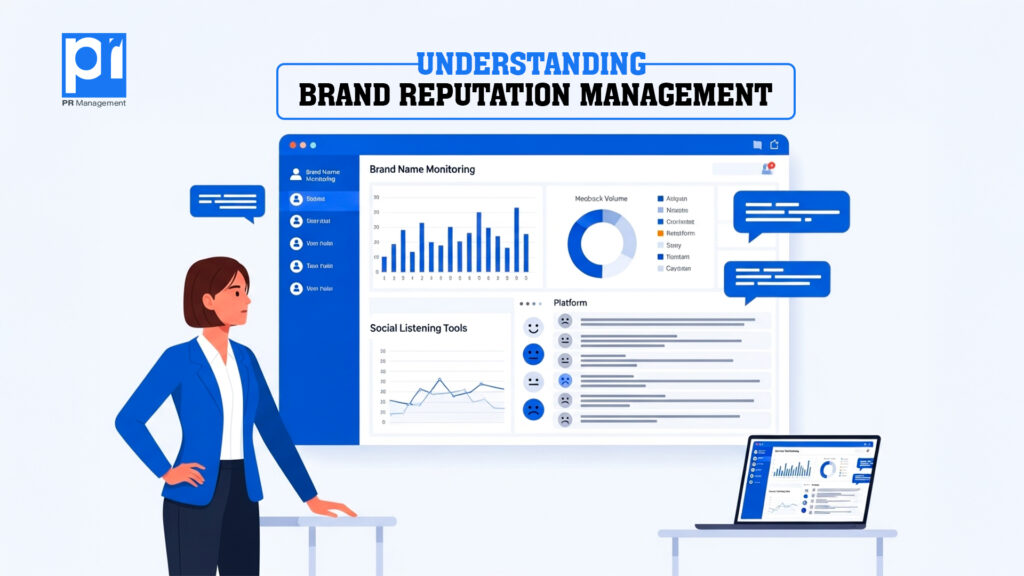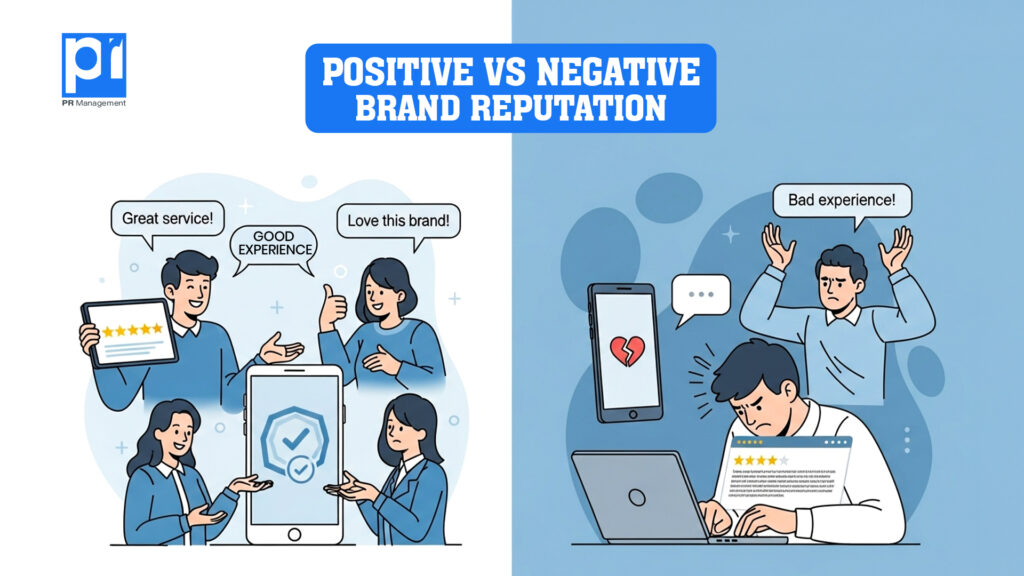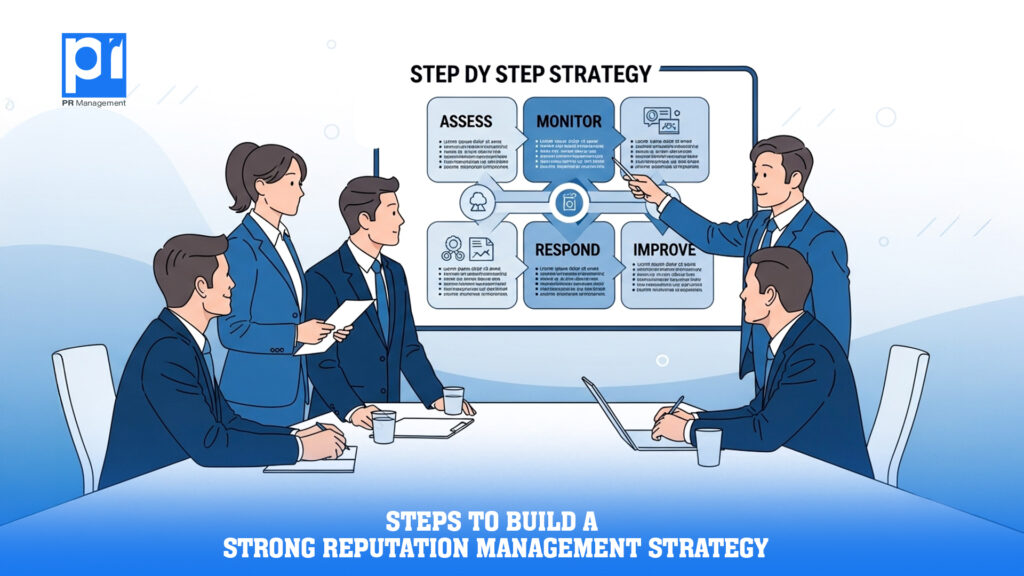In today’s digital world, what is your business’s greatest asset? It might not be your products, your office, or even your team. It’s your reputation. A strong reputation can make your business thrive, while a poor one can bring it to its knees.
This is especially true online, where a single negative comment can reach thousands of people in minutes. The way customers perceive your brand online directly impacts their decision to buy from you. This perception is your Brand Reputation, and the strategic process of shaping it is known as Brand Reputation Management a critical part of modern Public Relations (PR).
This article will guide you through the essentials of managing your brand’s reputation to build a powerful and positive online image.

What Exactly Is Brand Reputation Management?
In simple terms, Brand Reputation Management is the continuous process of monitoring and influencing how your brand is perceived by the public. As a key function of PR, it involves answering several important questions:
- Public Perception: How do people generally see your brand?
- Likes and Dislikes: What specific aspects of your brand do customers appreciate or criticize?
- Brand Association: What feelings or ideas do people connect with your brand?
- Competitive Standing: Where does your brand stand in the minds of consumers compared to your competitors?
By finding the answers to these questions and taking strategic action based on them is the core of Brand Reputation Management, allowing a brand to significantly improve its public image.

Why is Brand Reputation So Crucial?
Years ago, brands relied on traditional advertising and media to build their image. Today, the game has changed. Online reviews, social media conversations, and public forums have the most power.
- Positive Reputation: A good reputation builds loyalty among your current customers and helps attract new ones. It fosters trust, which is essential for increasing your overall Brand Equity.
- Negative Reputation: On the other hand, a negative reputation can quickly damage customer loyalty and scare away potential buyers. In the age of social media, bad news travels fast, and a damaged reputation can become a business’s worst nightmare.
How to Implement an Effective Reputation Management Strategy
Building a robust Brand Reputation Management strategy is a straightforward process. By following these five steps, you can create an effective plan for your brand.

Step 1: Assess Your Current Reputation
First, you need to understand where you stand right now. Collect information from different sources:
- Social Media Channels: See what people are saying about you on your Facebook page and in relevant groups.
- Online Platforms: Check reviews on Google and other relevant online platforms where your brand is discussed. For almost all businesses today, online reviews are a major factor in a customer’s decision-making process.
- Customer Surveys: Directly ask your customers for their feedback.
This information will give you a clear understanding of your brand’s current perception.
Step 2: Get All Stakeholders on Board
Managing brand reputation is a team effort. It involves everyone, from the customer service department to the sales team. Make sure everyone in your company understands their role in protecting the brand’s reputation.
Step 3: Monitor Continuously
Brand reputation is not a one-time task; it requires continuous monitoring. Use Social Listening Tools to keep track of what people are saying about your brand online. Analyze the sentiment (the emotion behind the comments) to see if the conversation is positive, negative, or neutral.
Step 4: Create Crisis Response Plans
Every business makes mistakes. A minor issue can turn into a major crisis if not handled properly. You need a plan for situations like:
- Criticism about a faulty product.
- A bad customer experience.
- Technical problems with your website.
Prepare a Crisis Management Plan that outlines how your team will respond in these situations. Knowing what to say and do beforehand can make all the difference.
Step 5: Learn and Act on Opportunities
Reputation management is not just about fixing problems; it’s also about highlighting what you do well. Use positive reviews as testimonials and thank your customers for their kind words.
Treat negative feedback as a chance to learn and improve. Your most critical customers can often give you the best advice. By listening to them and solving their problems, you show that you care, which can turn a negative experience into a positive one.
Why Professional Management is a Strategic Investment
Ultimately, your brand’s reputation is its most valuable currency. Protecting and growing this asset isn’t a side project; it’s a core business function that requires dedicated expertise, specialized tools, and a proactive, strategic approach. While the principles may seem straightforward, navigating the complexities of public perception and crisis management demands professional experience.
If you are serious about building a powerful and resilient brand image, then professional guidance is not a luxury it’s an essential investment in your long-term success.

Contact our team to discover how our expert PR services can help you build the positive and powerful brand your business deserves.